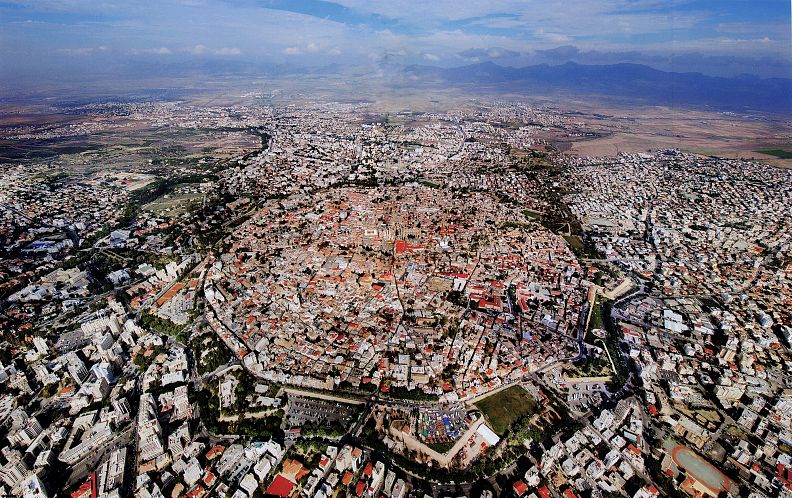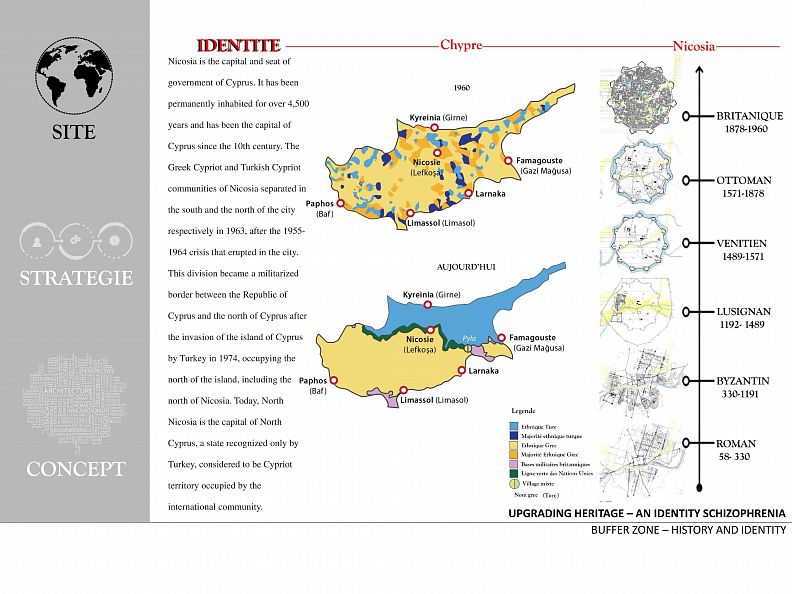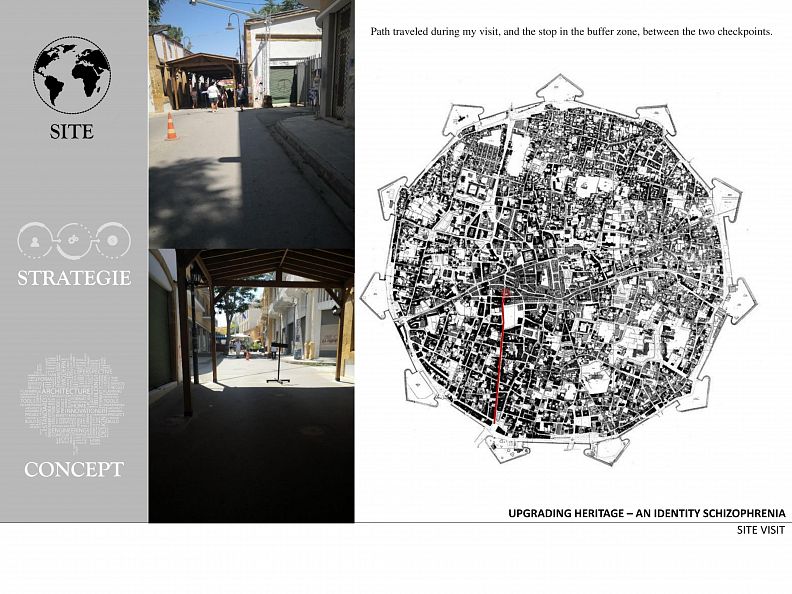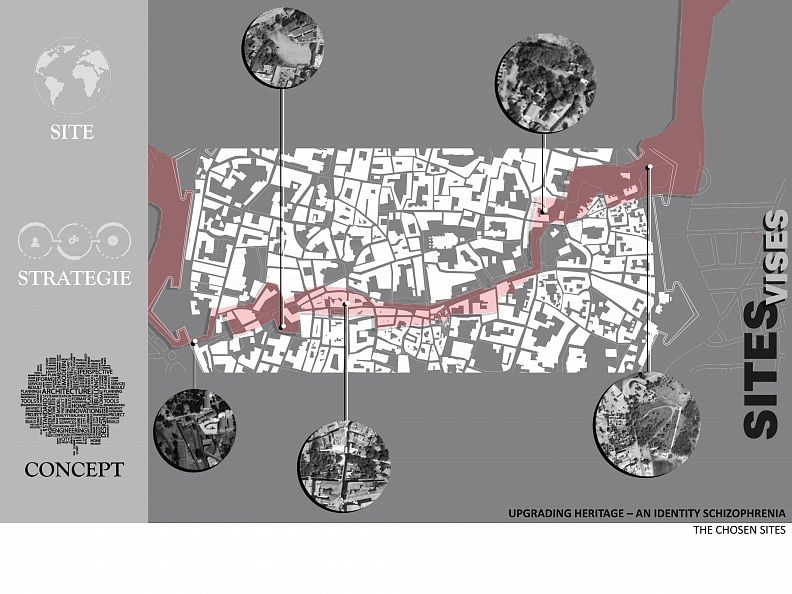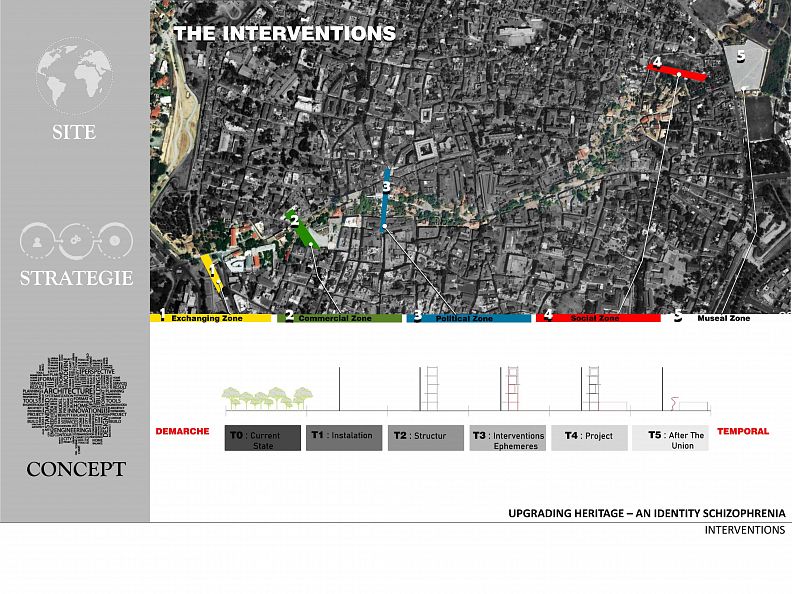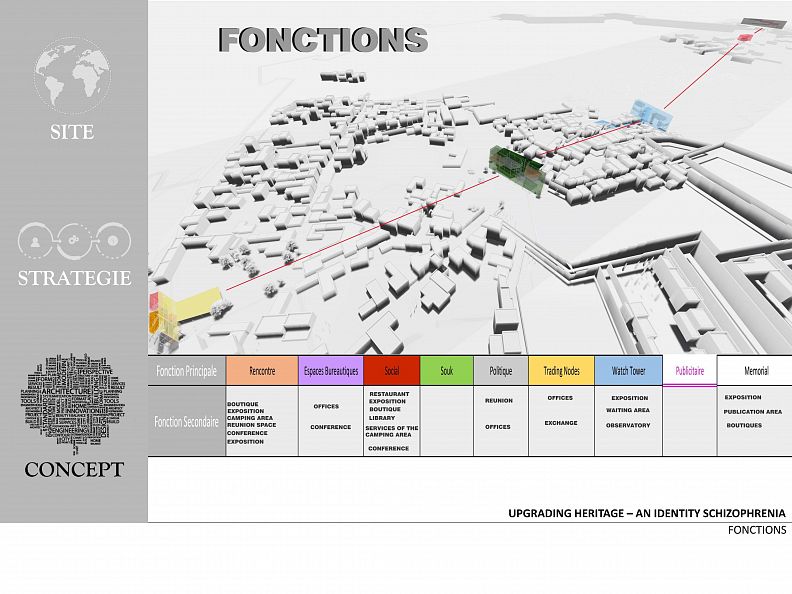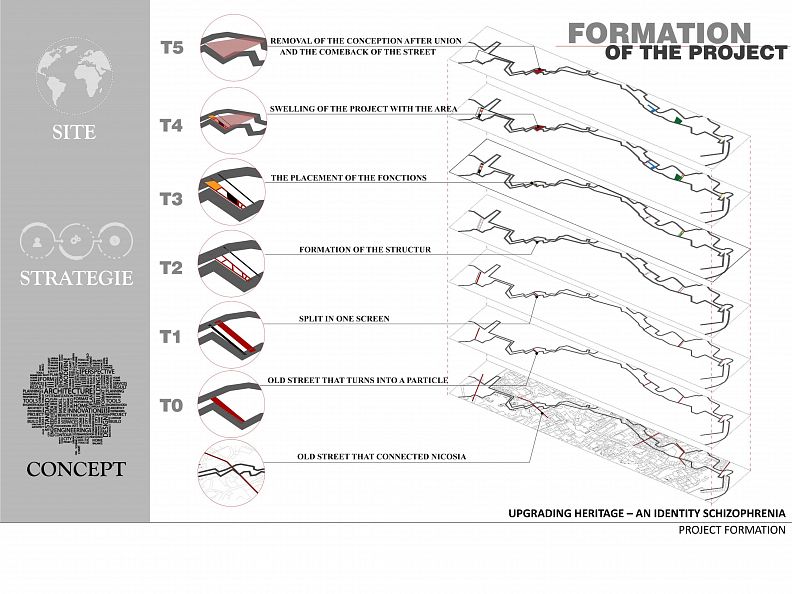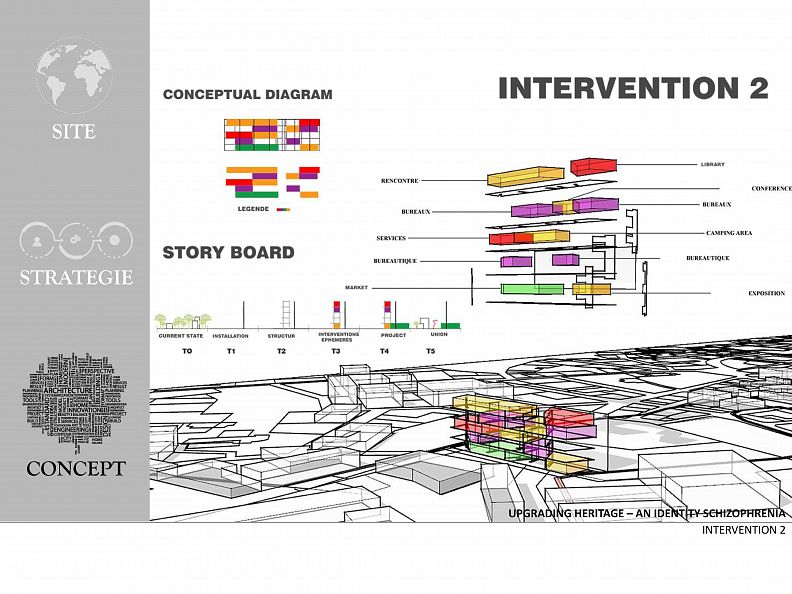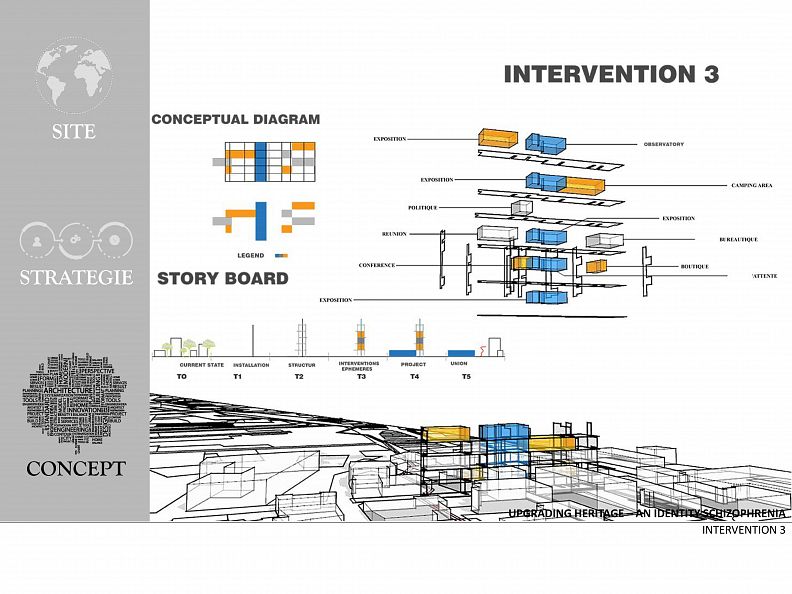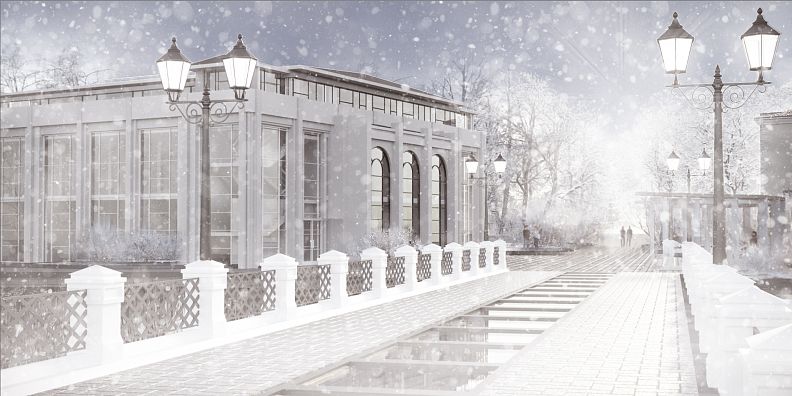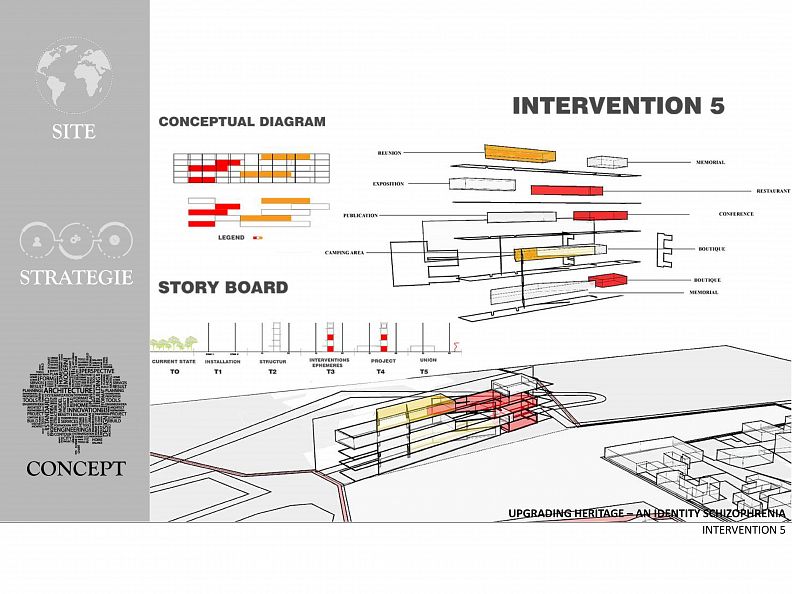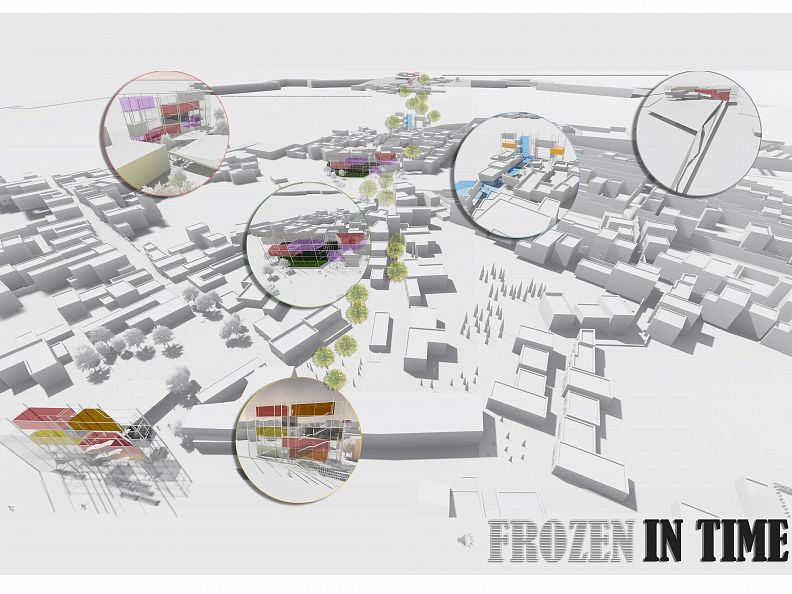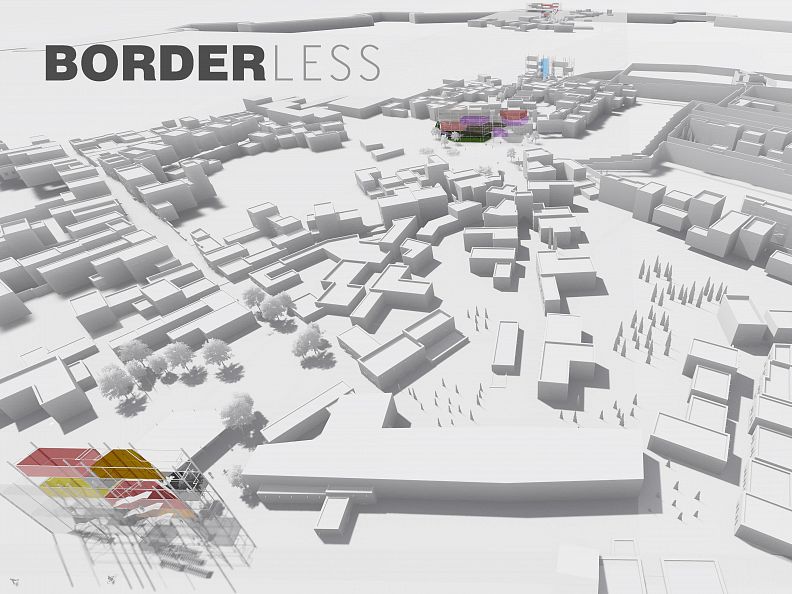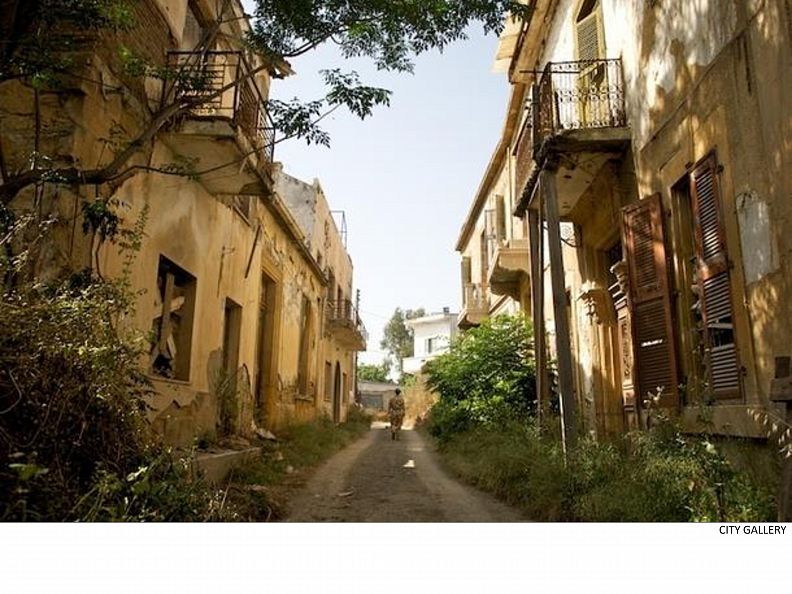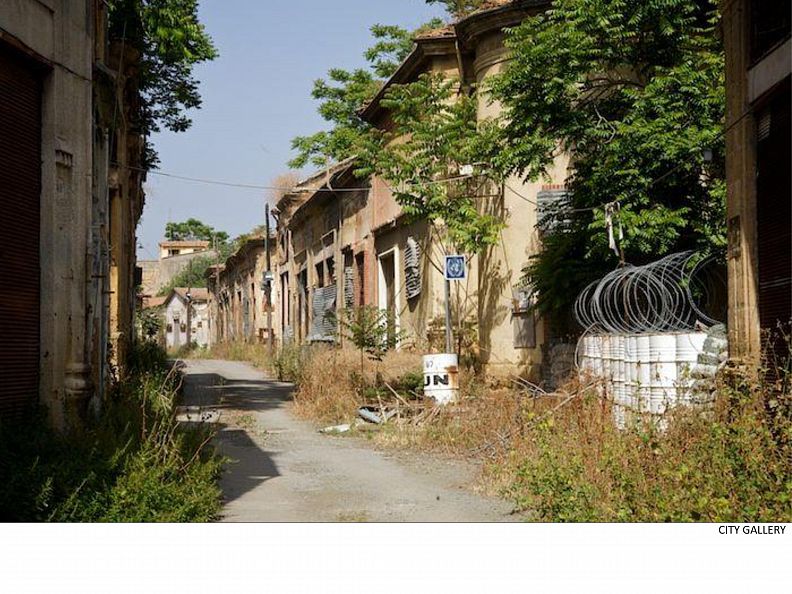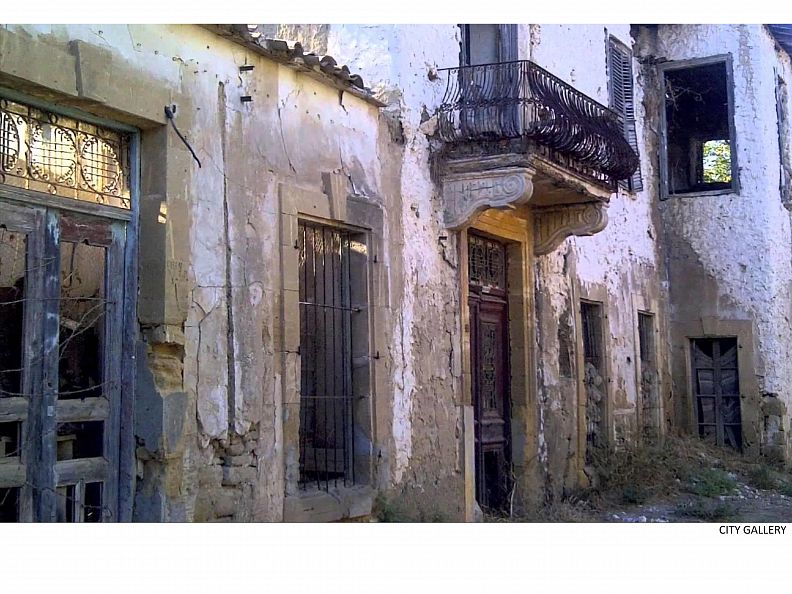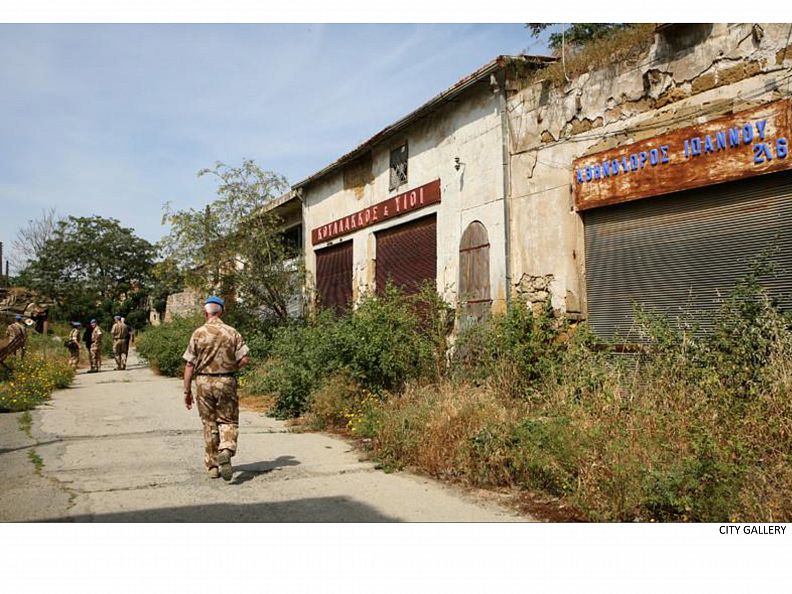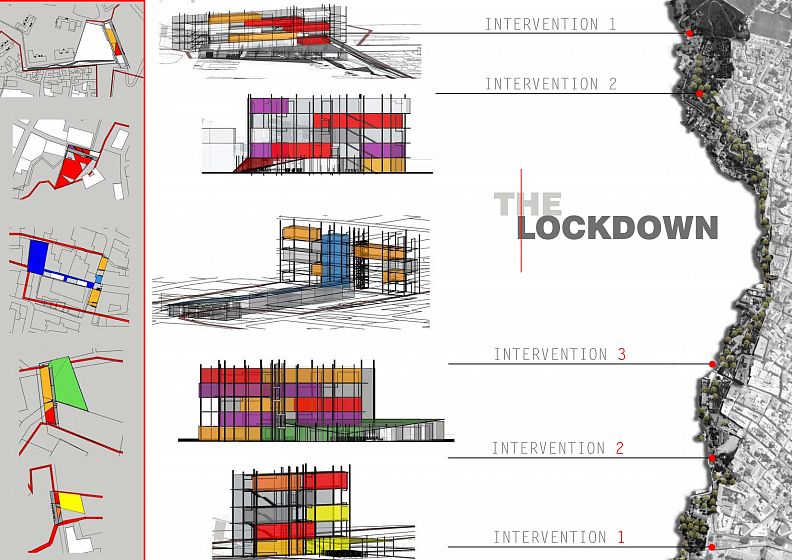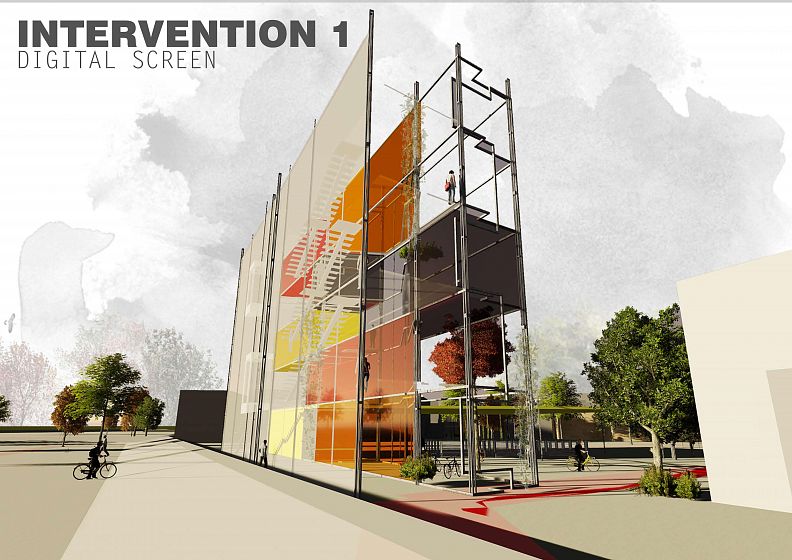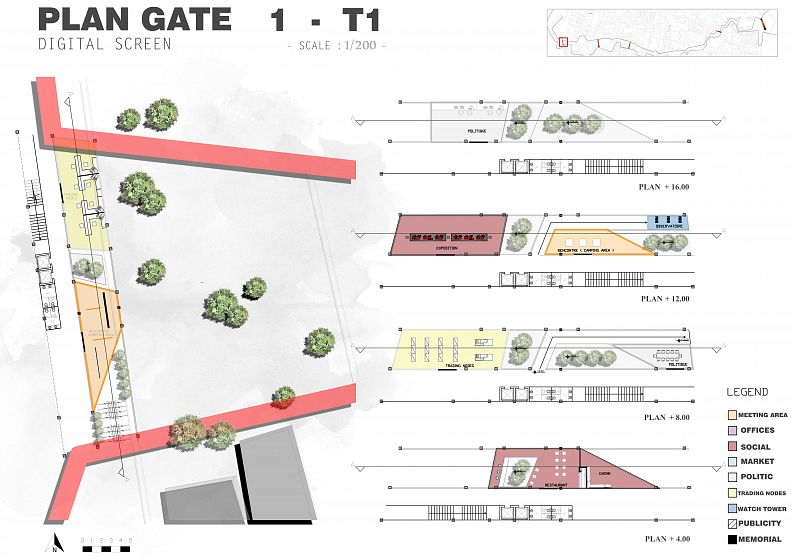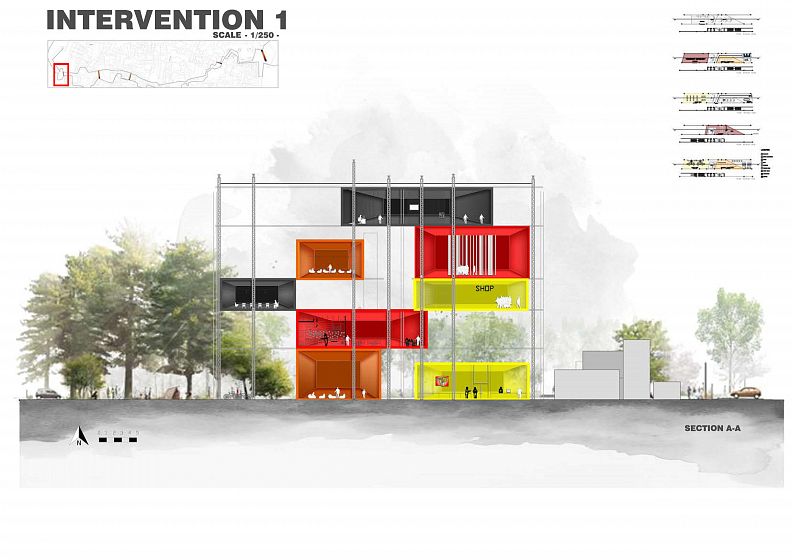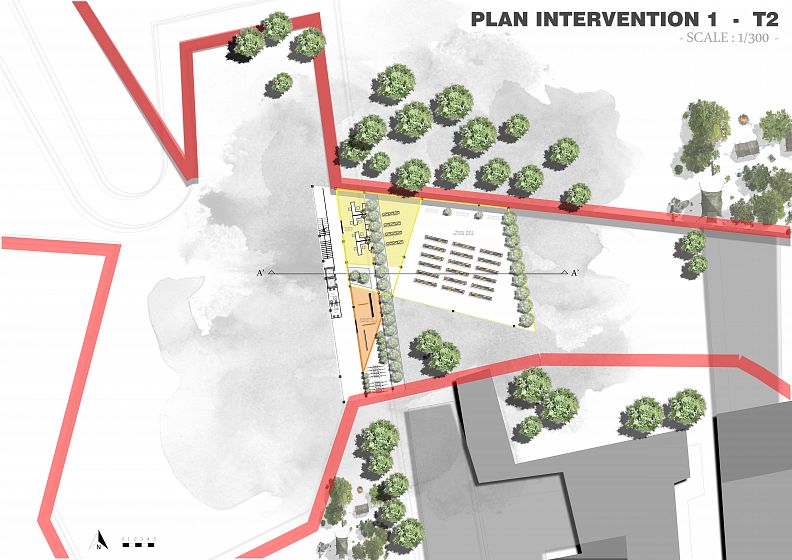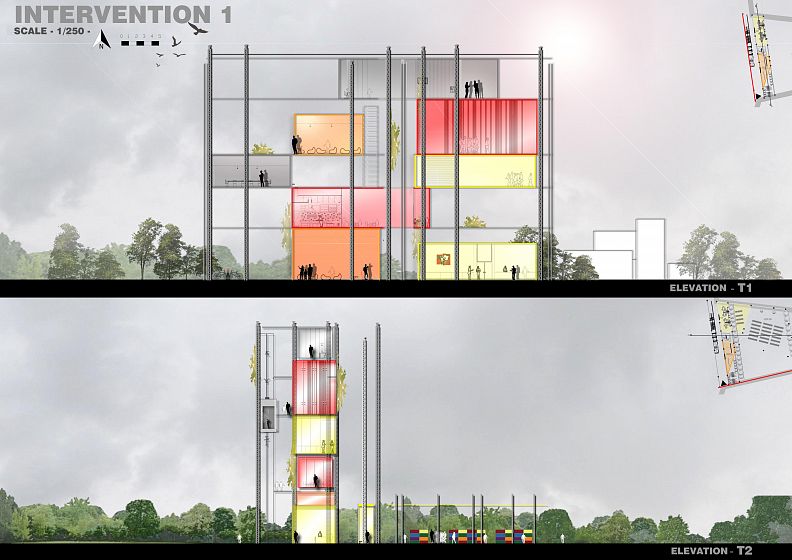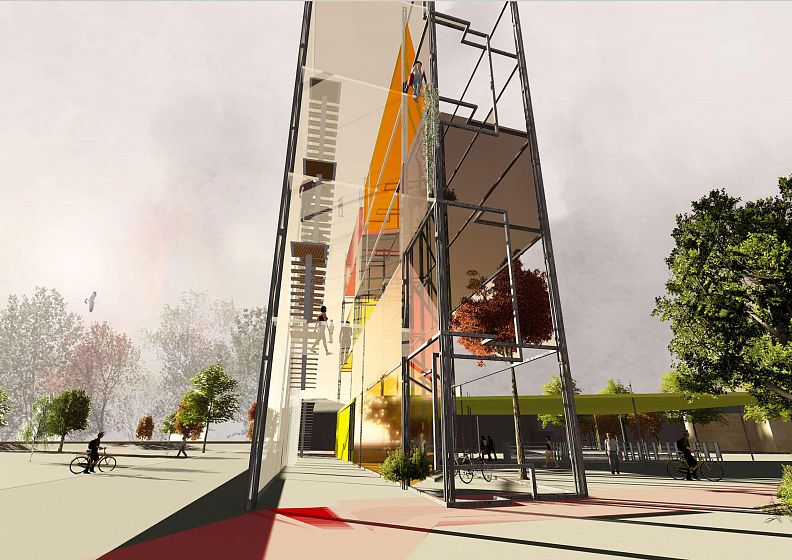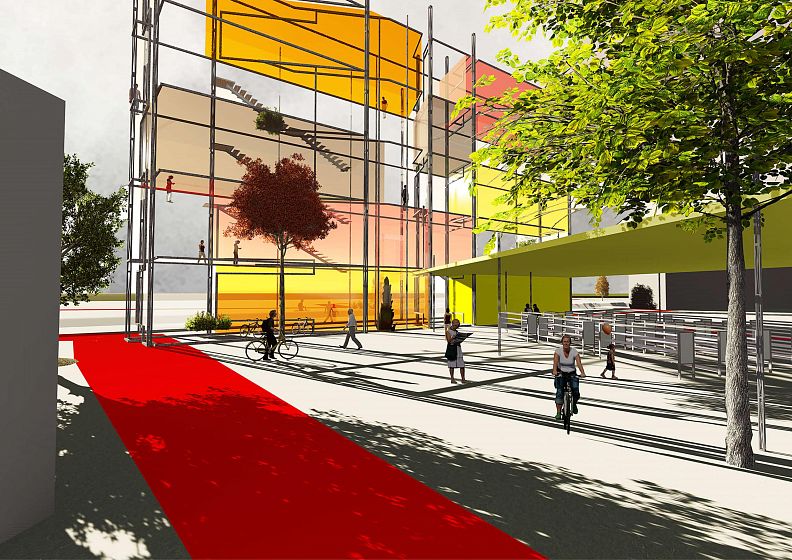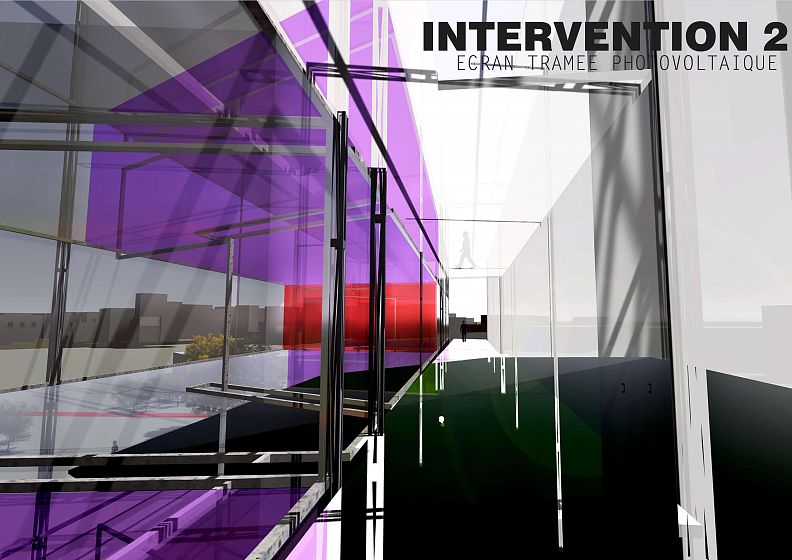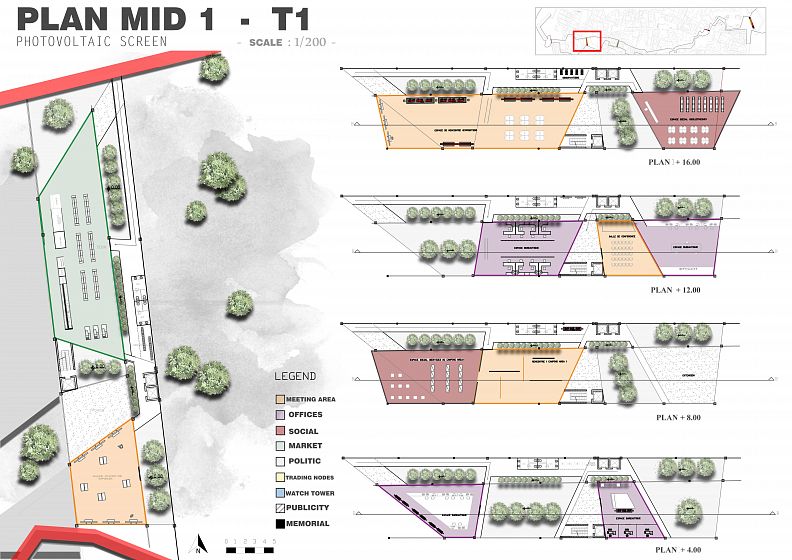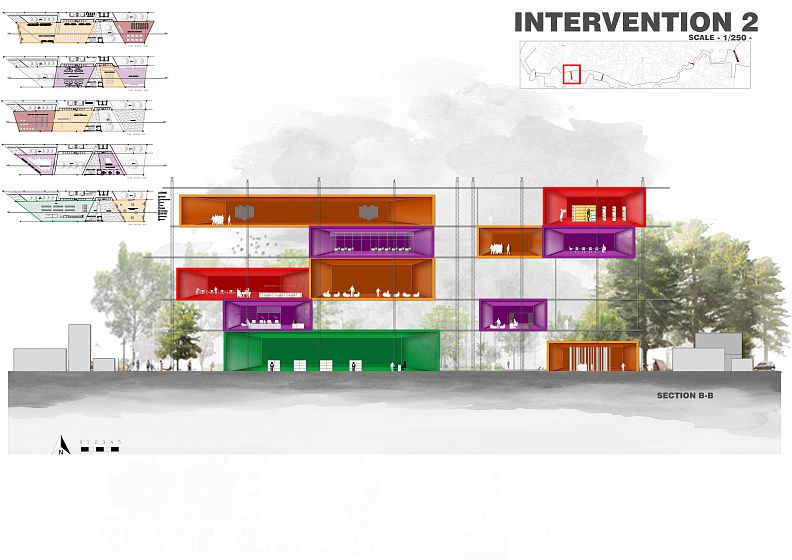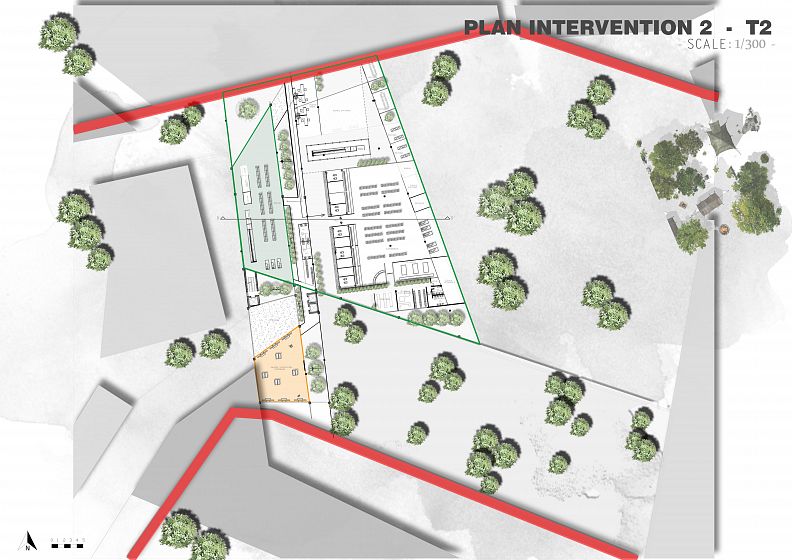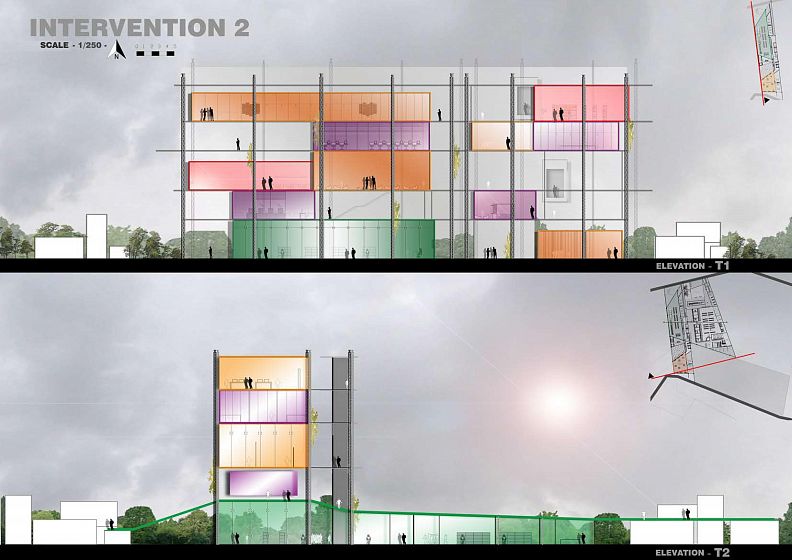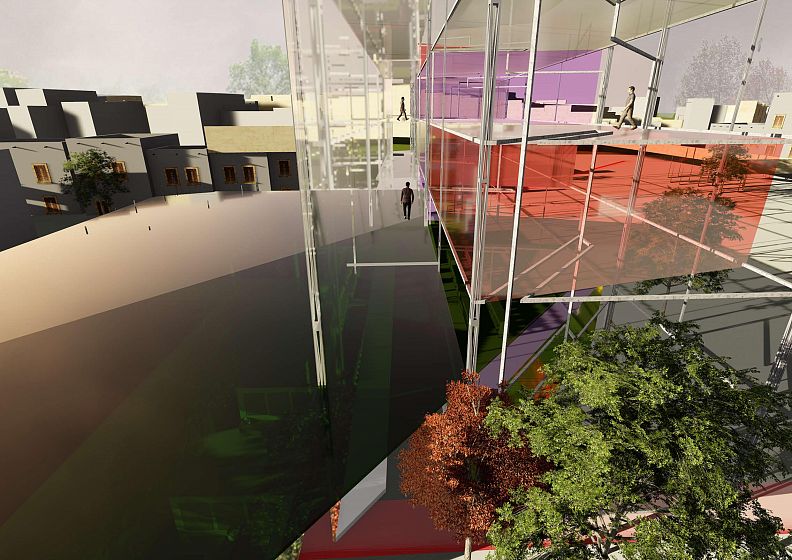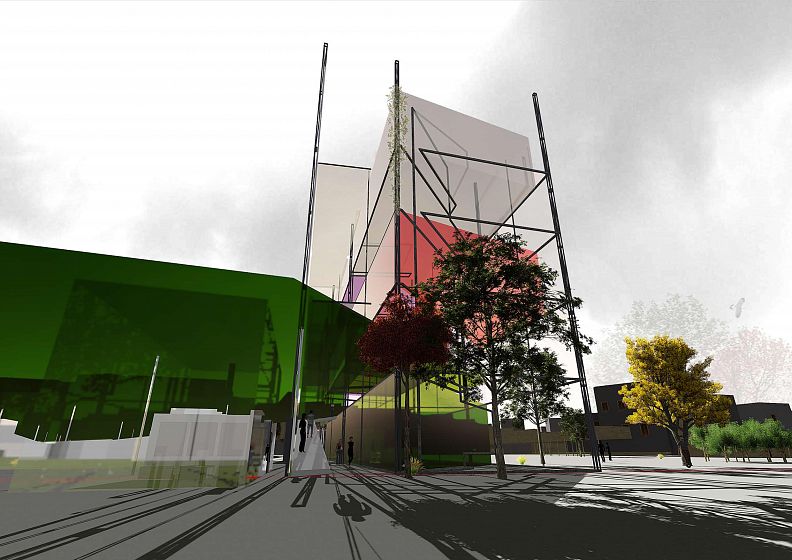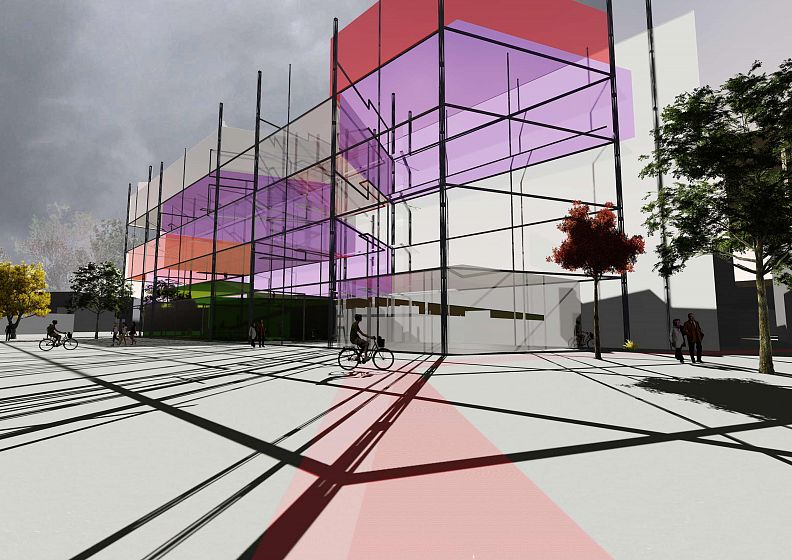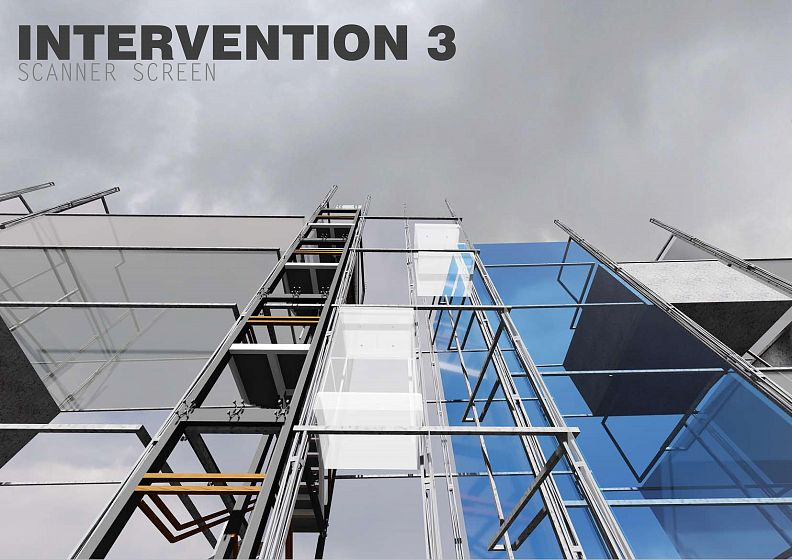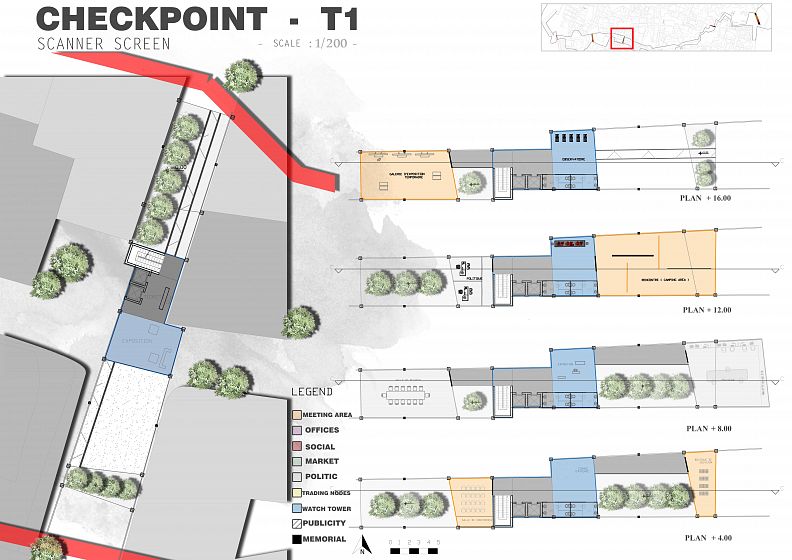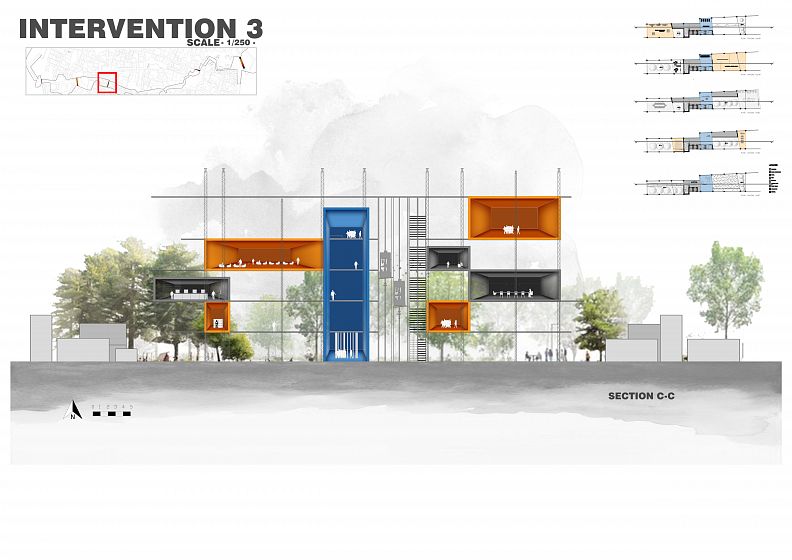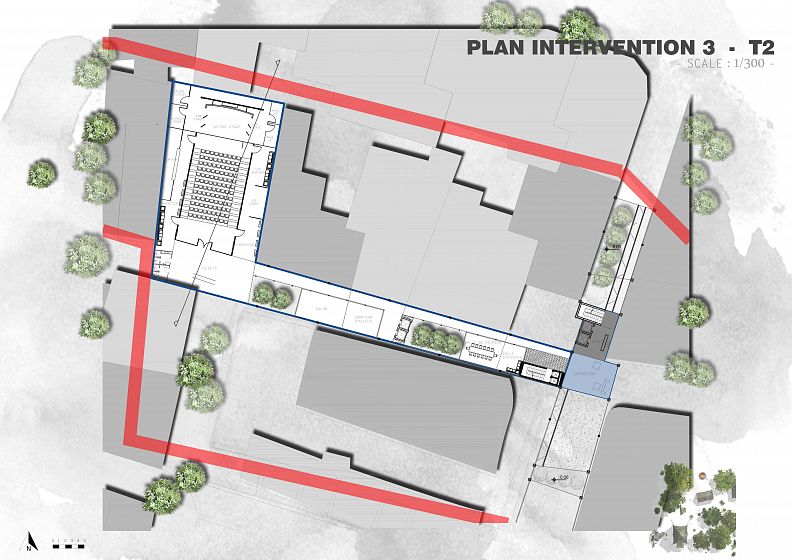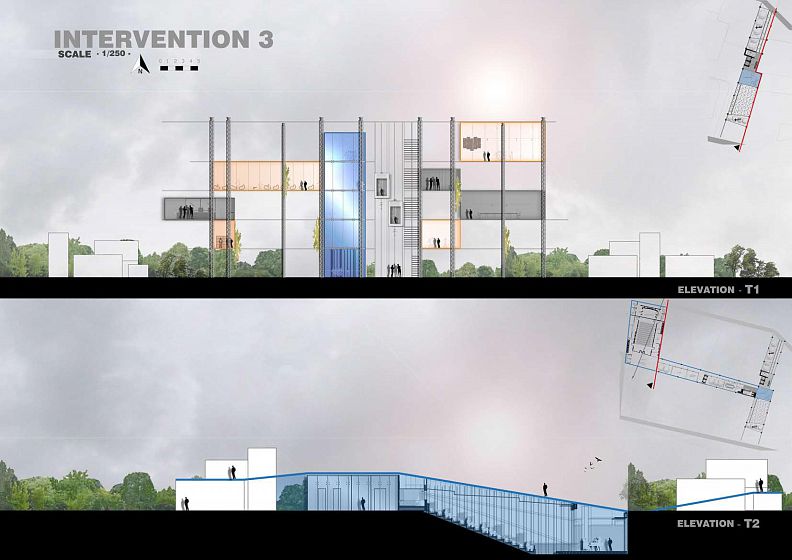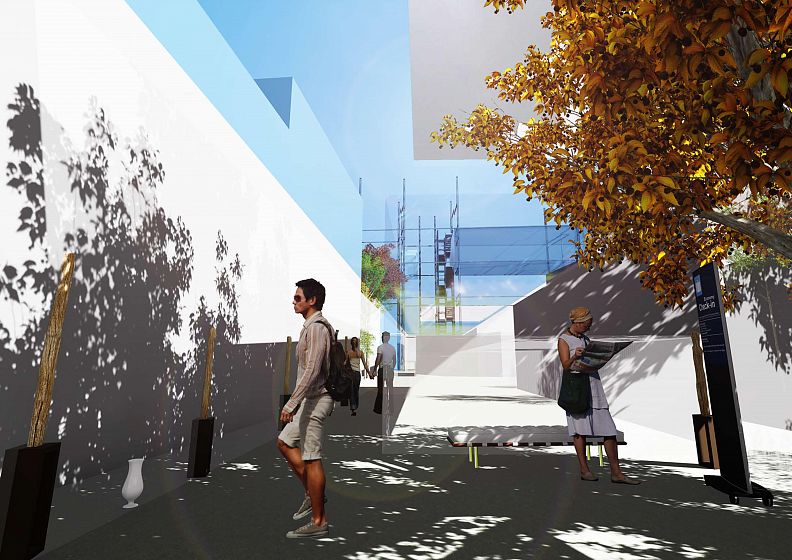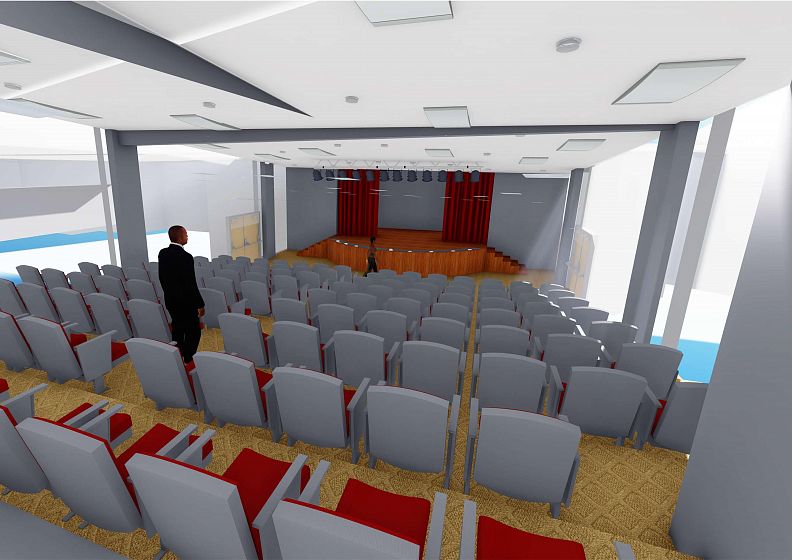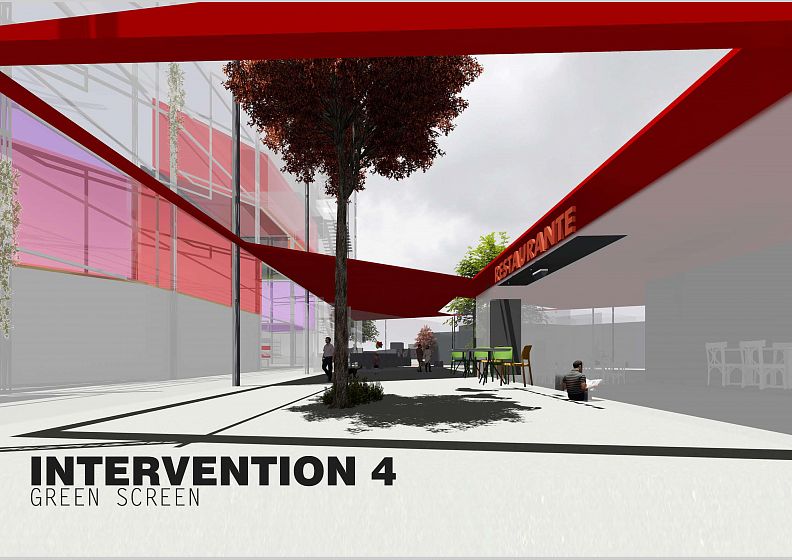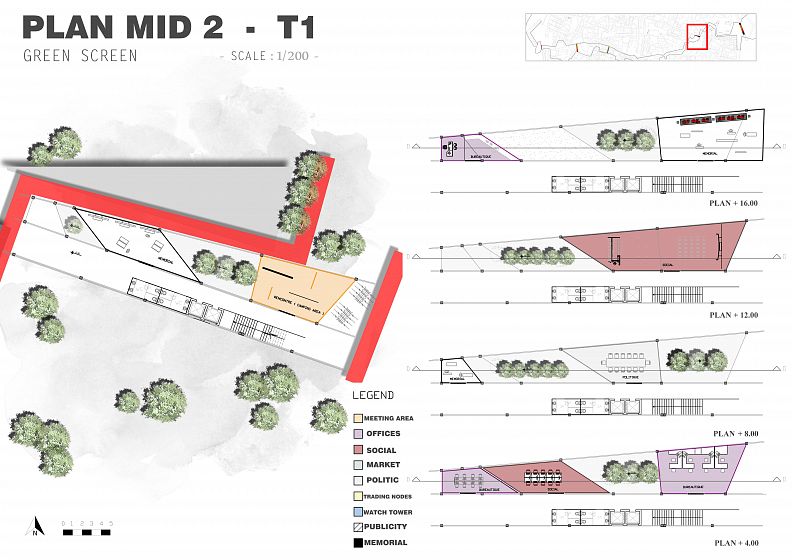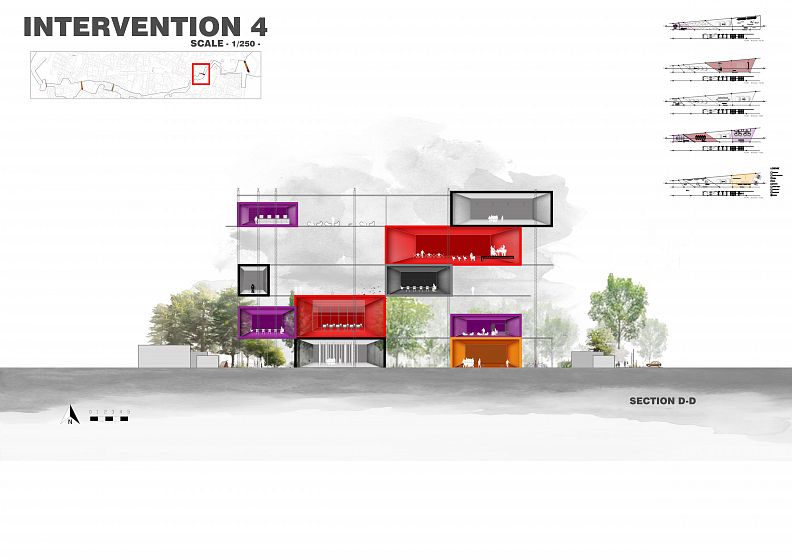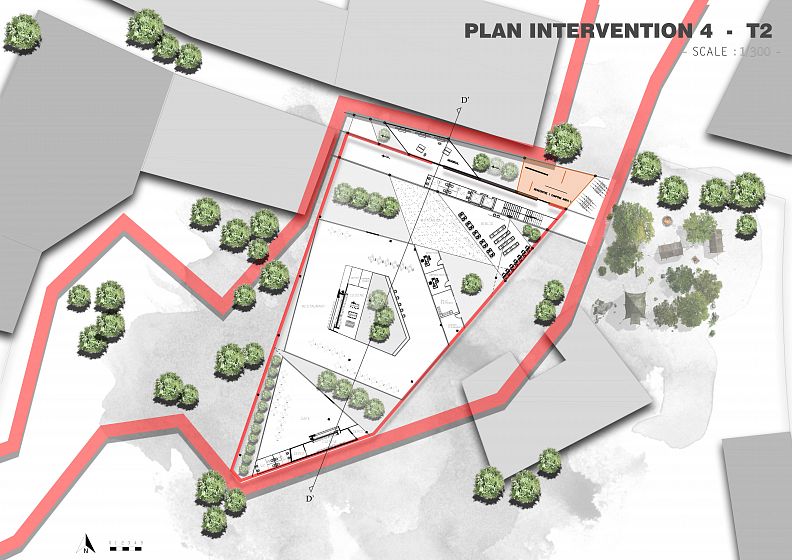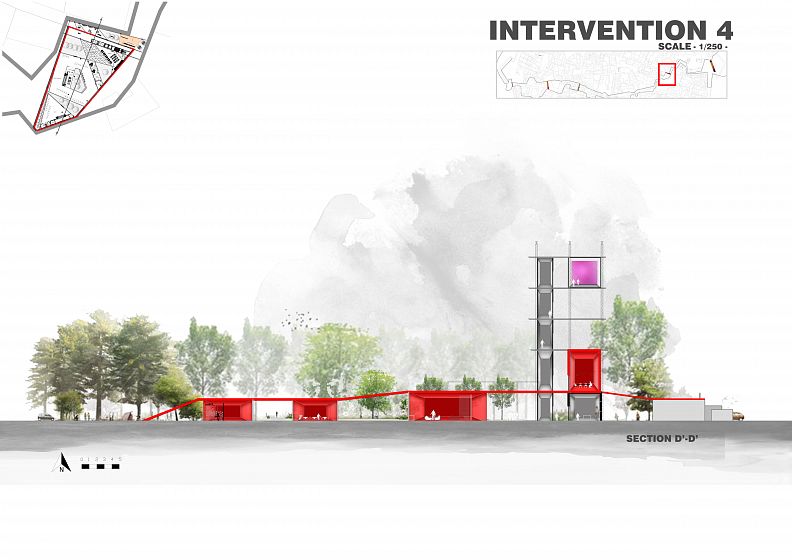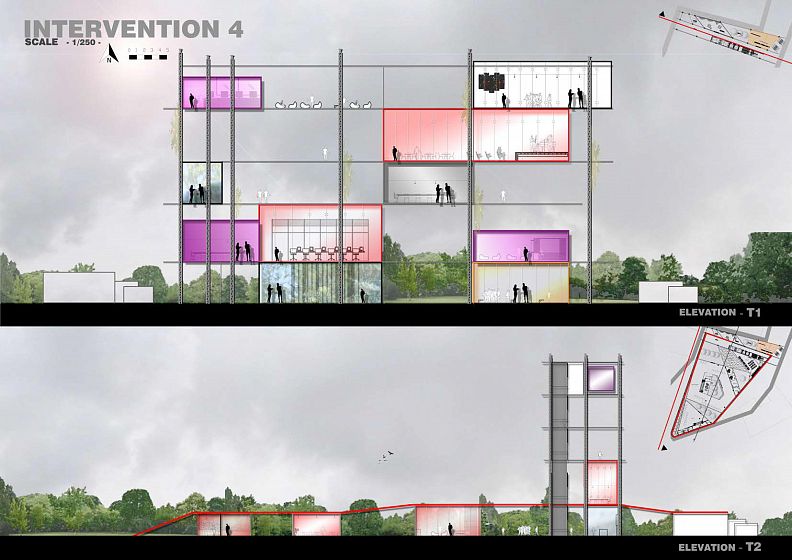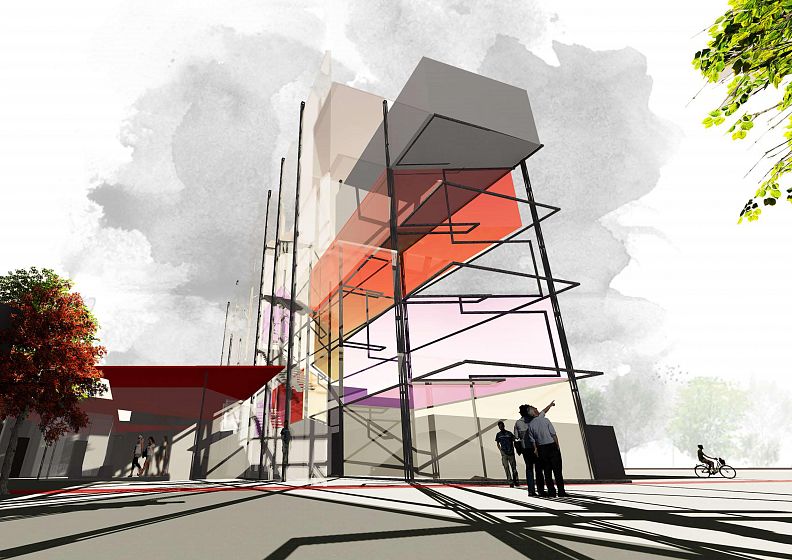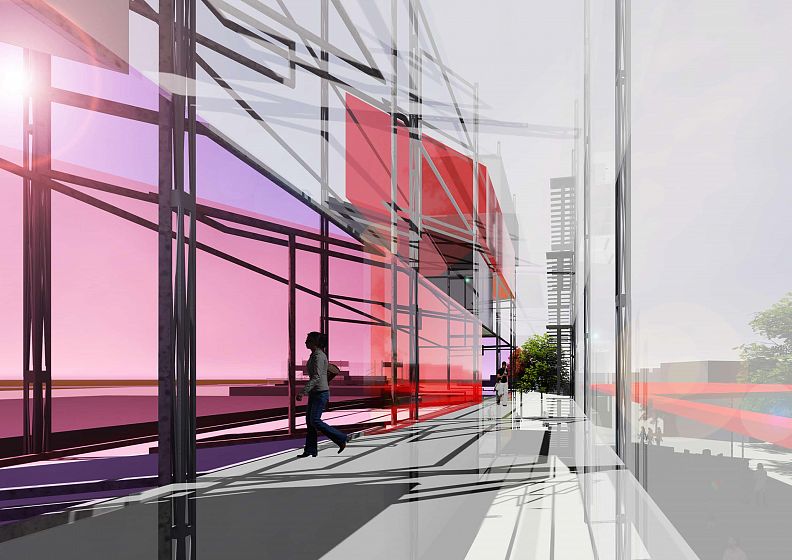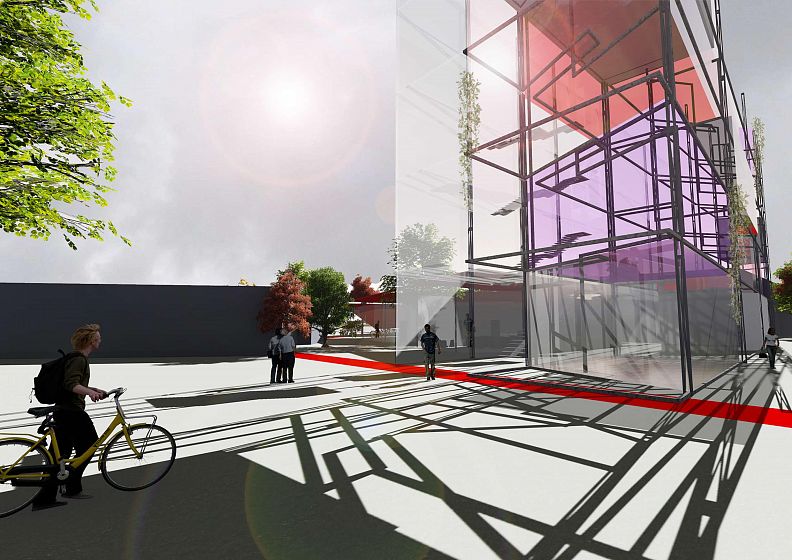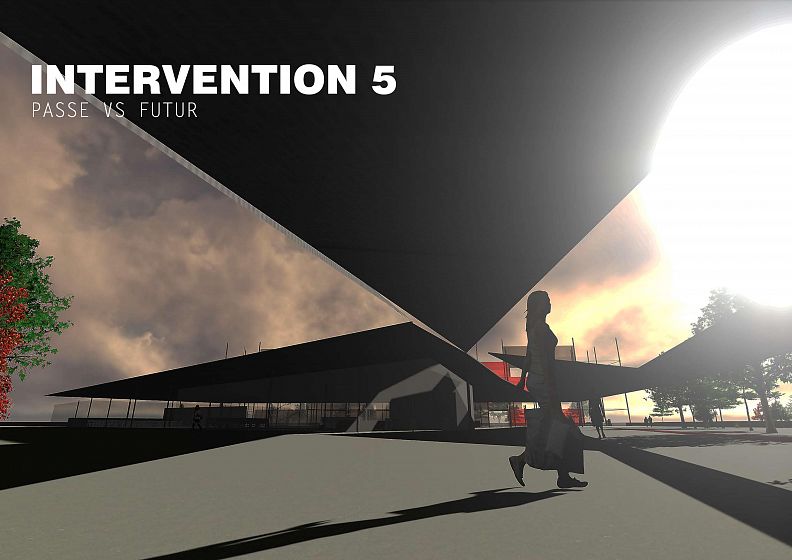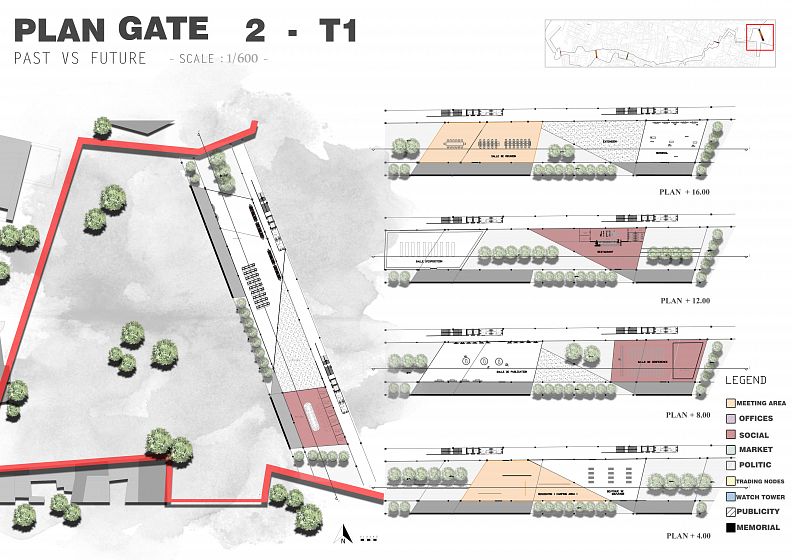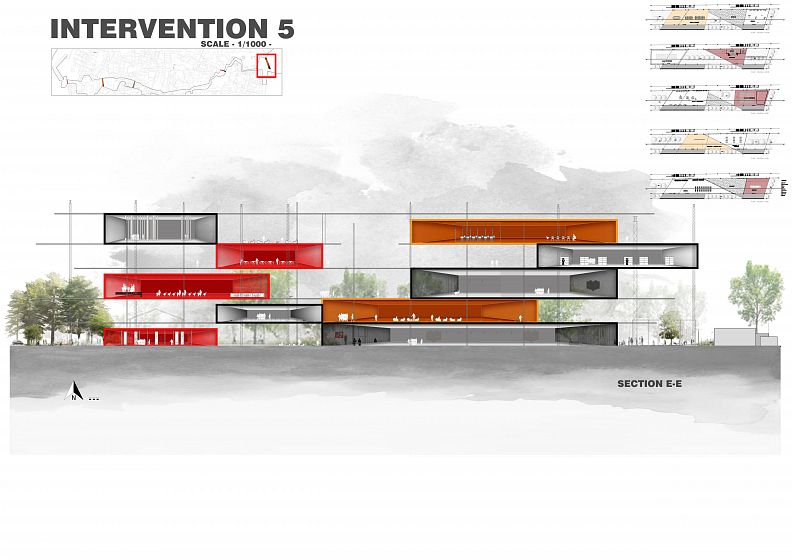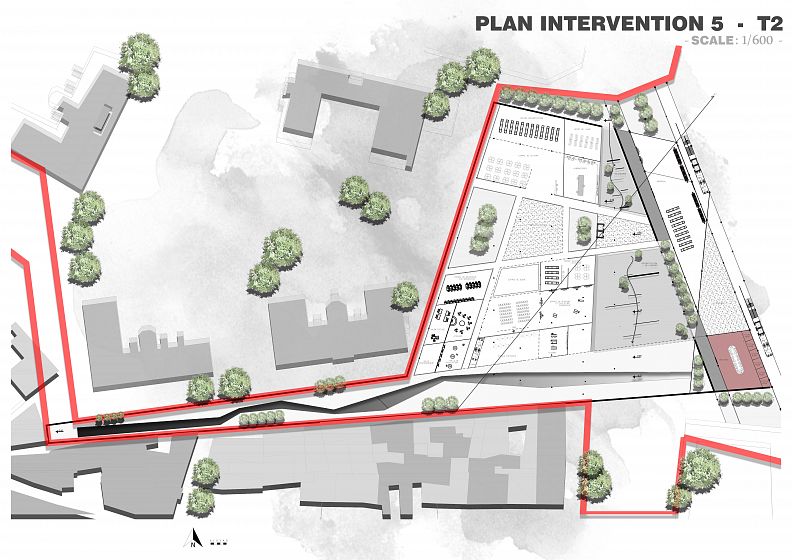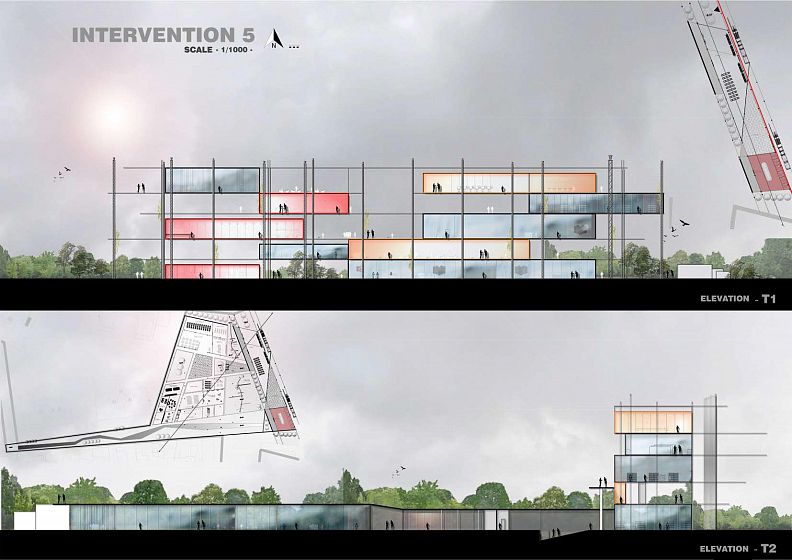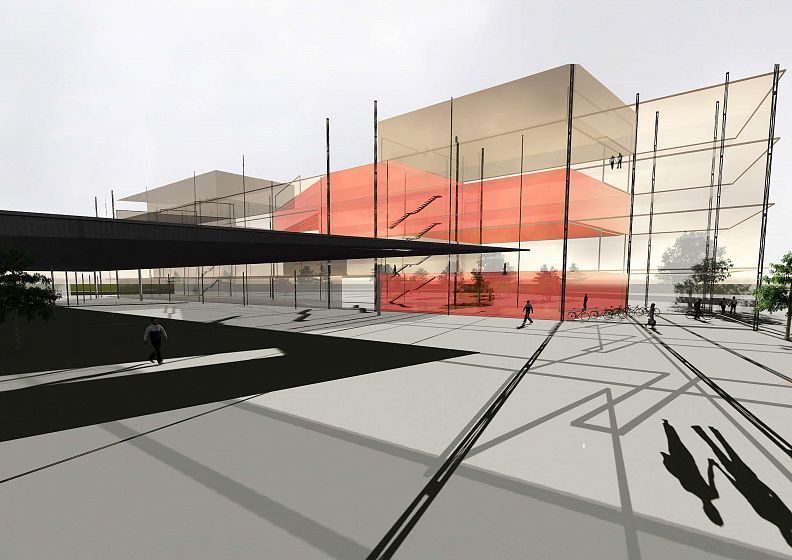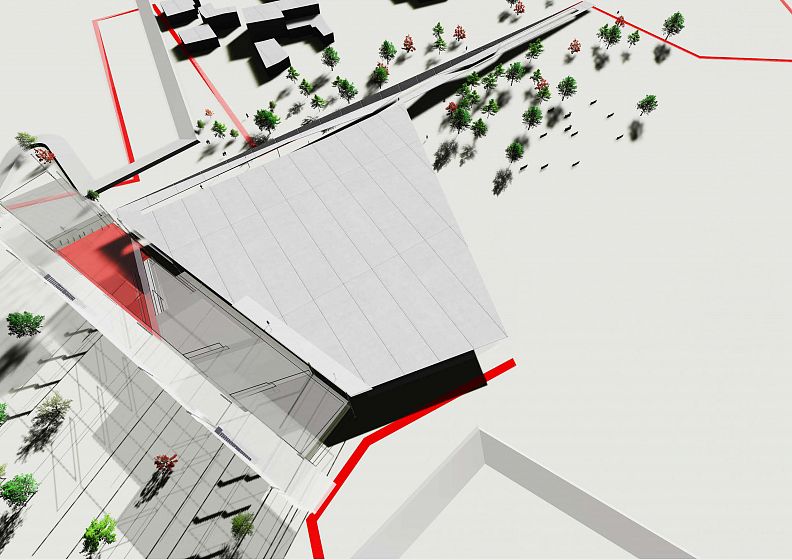THE LOCKDOWN ZONE - NICOSIA

Project idea
NICOSIA, capital of CYPRUS, divided since 1974 into two parts: Northern Cyprus (Turks) and Southern Cyprus (GRECS) around a buffer zone, suffers from a division not only geographical but also political, social, cultural, economic. This area is said to be "dead" by the presence of human traces dating back to the pre-war period, around 55 years old, abandoned today and claimed by nature. A policy of revitalization of this area is necessary in a framework: Tourist-Economic-Political-Social. ‘GREEN’ is life. So the strategy overflows with green injections, surrounded by poles of attraction has several functions in order to transform the buffer zone of a taboo subject, and war scar into a backbone of cultural, natural tourism and similarly a peace promotion zone between two rival communities. ‘THE WALLED CITY’, as it was called, occupied today by two walls. The first one, physical, the rampart, which although it has lost its protective function, but its physical presence still influences the city. And a second, having a moral presence, resulting from division, nowadays forming a taboo subject, keeping this a dead zone. Nicosia is the last divided capital in the world. Accessible only to UN soldiers, the latter therefore form a whole that inhabits the nonexistent. Therefore, the three driving forces occupying the project will be: the residents: Greeks and Turks, tourists, The UN.
Project description
Aiming for a revitalization, the project takes a green attitude towards the site, in which, the elements of the project arrange the space for the purpose of healing. Considering the upgrading of the site, several lots have been chosen, all along the no man's land intramuros (Inside the fortified city), so that the project begins with one of the walls presenting one of the old city gates, and ending with another. Due to the urban density of this site, the project will form a pattern of weaving of the two zones while communicating with its surroundings, either an indirect communication by its installation in this space, or direct, with the existing buildings and ruins.
Time parameter is one of the pillars of the project. Being a taboo subject, the revalorization of this area and the installation of the project will be animated by six time sequences in order to familiarize residents with the space, as well as visitors. The five selected sites, formed before alleys which lost their function due to the division. So the first possible opening is to give meaning to these arteries. Each intervention will have a character and an identity depending on its neighborhood and its needs. Like the first one starting with the old city gate, PAPHOS GATE, forms a trading center with a commercial character connecting the old city to the new one. While the second intervention takes on a commercial identity promoting the spirit of the old markets already present to the present day.
The third, located on the two present checkpoints, will take a political attitude, by the presence of the UN, forming a platform for local and international political exchange.
The fourth forms a social nucleus, promoting the spirit of exchange between the two rival communities, Greek and Turks, with the aim of familiarizing the young people with each other, with customs and identities, aiming for a change in the future generation. While the last, located at the other end of the route, surrounded by the second wall, takes on the attitude of a living museum, animating the existing ruins in its vicinity.
The design stages of the project can be summed up in six stages: The first, T0, presenting the current state, summarized by the claim of space by nature, and the activities of the OBZ movement (occupy buffer zone), a movement of protest which started with a weekly occupation of the checkpoints present in the buffer zone, as well as the abandoned buildings, to arrive to a permanent occupation. The second time T1, is formulated by the presence of an illuminated installation, or ‘CHIP’, in each site, as a sign of bringing this space back to life. The T2 sequence, is presented by an elaboration of a metallic skeleton, initiating the existing frame in each site, thus forming an artistic, social installation with the aim of familiarizing residents and visitors to this area again, before conception.
In this same thought of regeneration, different ephemeral functions are stuck on these skeletons in a T3 sequence, each characterized by a color in a spirit of positivity and life, as of distinction of functions. In the T4 sequence, the permanent part of the project is developed, adjacent to the existing buildings, and forming part of the whole, so that it animates the space by acting with the elements present in the buffer zone: the green element and the buildings. While in a final sequence T5, in case of a union of the two zones or a reconciliation, the installations of phases T1, T2, T3, will be eliminated, the alleys resume their main function forming the relay, and the project presented by the phase T4 only in this phase, forming the agglomeration. So to conclude, in a state of division, developing a dead zone, for more than 50 years, and frozen in time, an approach to revitalizing the site is proposed, by developing centers of agglomerations according to a thought of 'magnet '' weaving a socio-economic, political and cultural fabric of both parties.
Technical information
Sustainability is the key towards the rehabilitation and regeneration of the chosen site. The Aim is to be able to revive this dead zone, with a minimum impact presented by the temporary installation, regularly changing regarding the time, to attend the level of a simple project affected by its surroundings. We evolve by healing.
